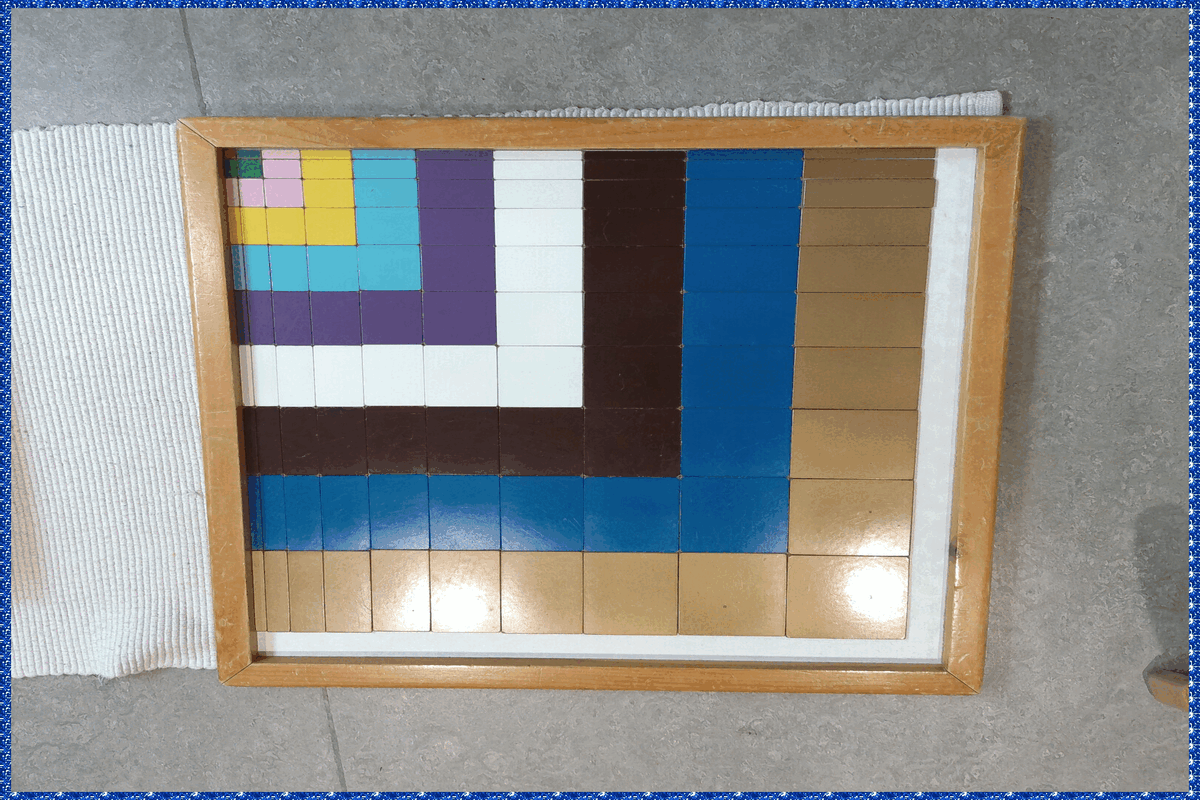Explore Mathematical Beauty through Sensorial Play!
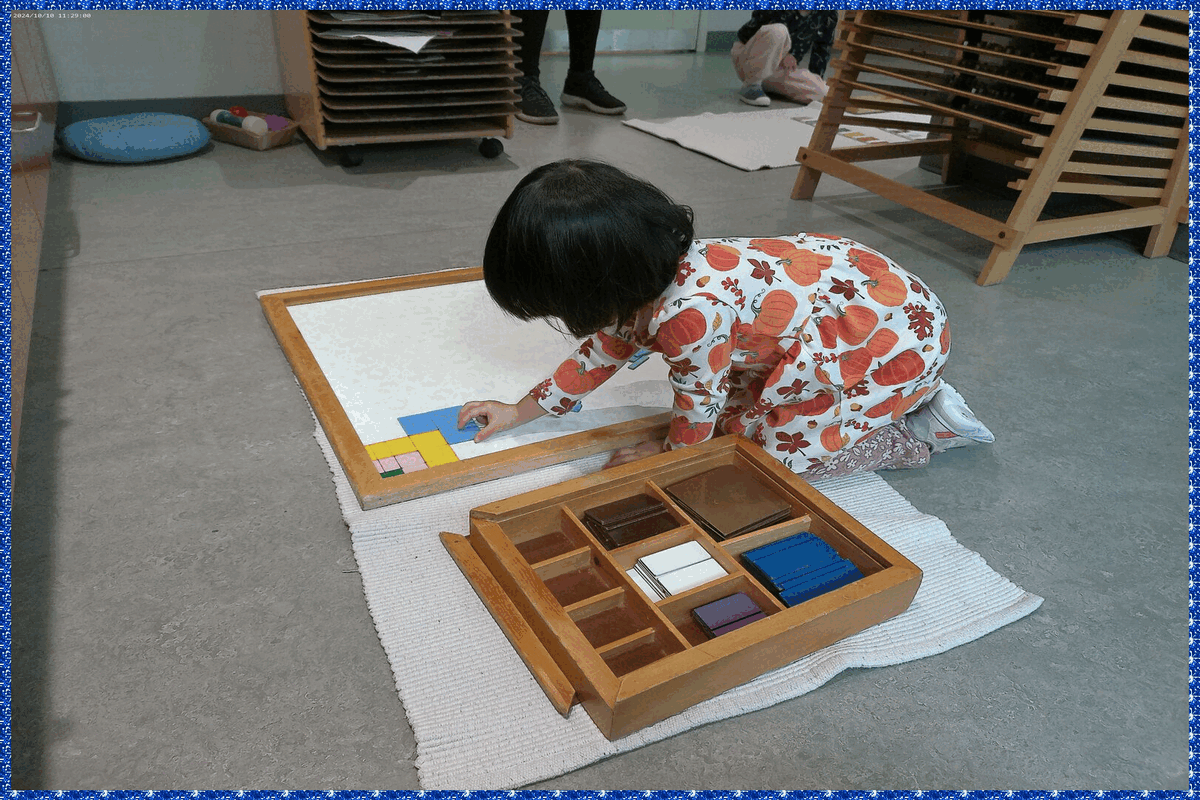
At the heart of Montessori education is the belief that children learn best through hands-on experiences that stimulate their curiosity and engage their natural love of discovery. The Pythagoras Square activity is a perfect example of how abstract mathematical concepts can be made tangible and fun for young learners in the Casa environment. While it introduces foundational mathematical ideas, it belongs to the Sensorial area of the Montessori curriculum, encouraging children to engage their senses in a playful, exploratory way. Casa East children have been enjoying practicing this activity individually or together with another peer.
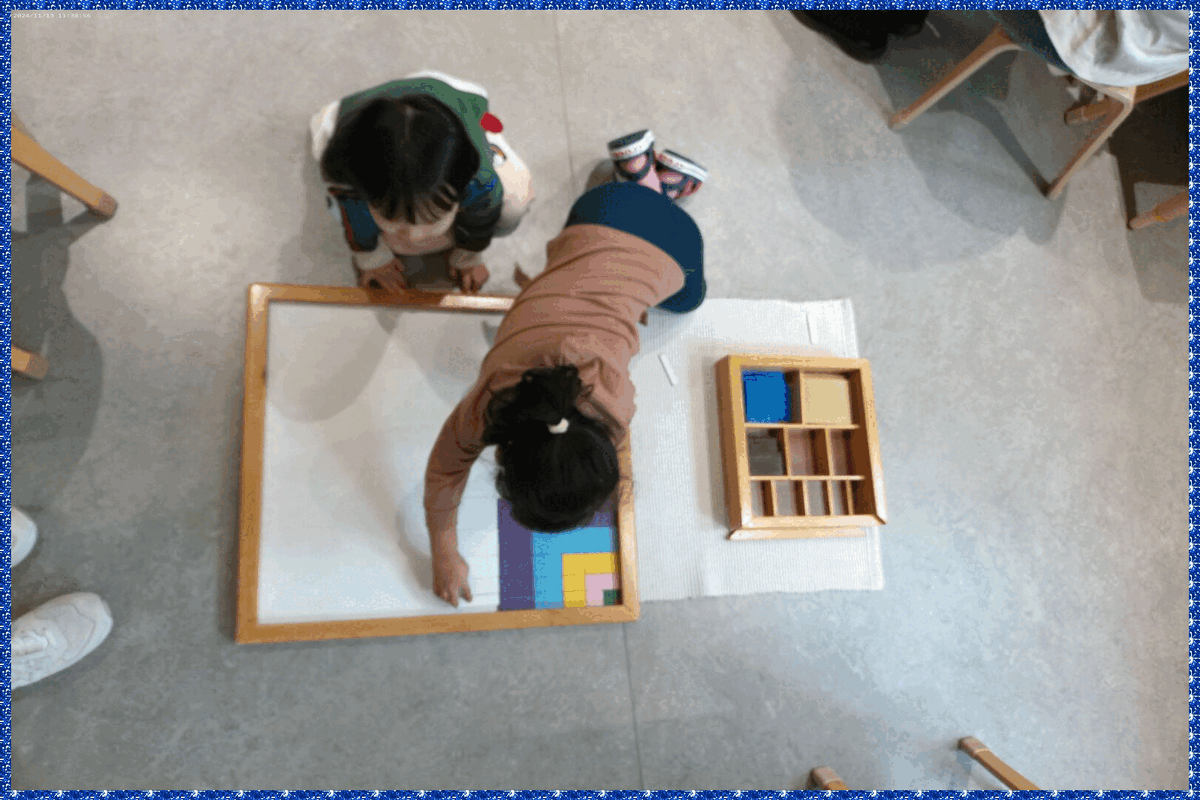
What is the Pythagoras Square?
The Pythagoras Square is a beautifully crafted Montessori material that introduces children to the foundational concept of geometry and the Pythagorean theorem in an intuitive and interactive way. This square consists of a grid of 100 smaller squares (10×10), and is designed to help children explore the relationships between numbers, geometric shapes, and the Pythagorean Theorem — a2+b2=c2.
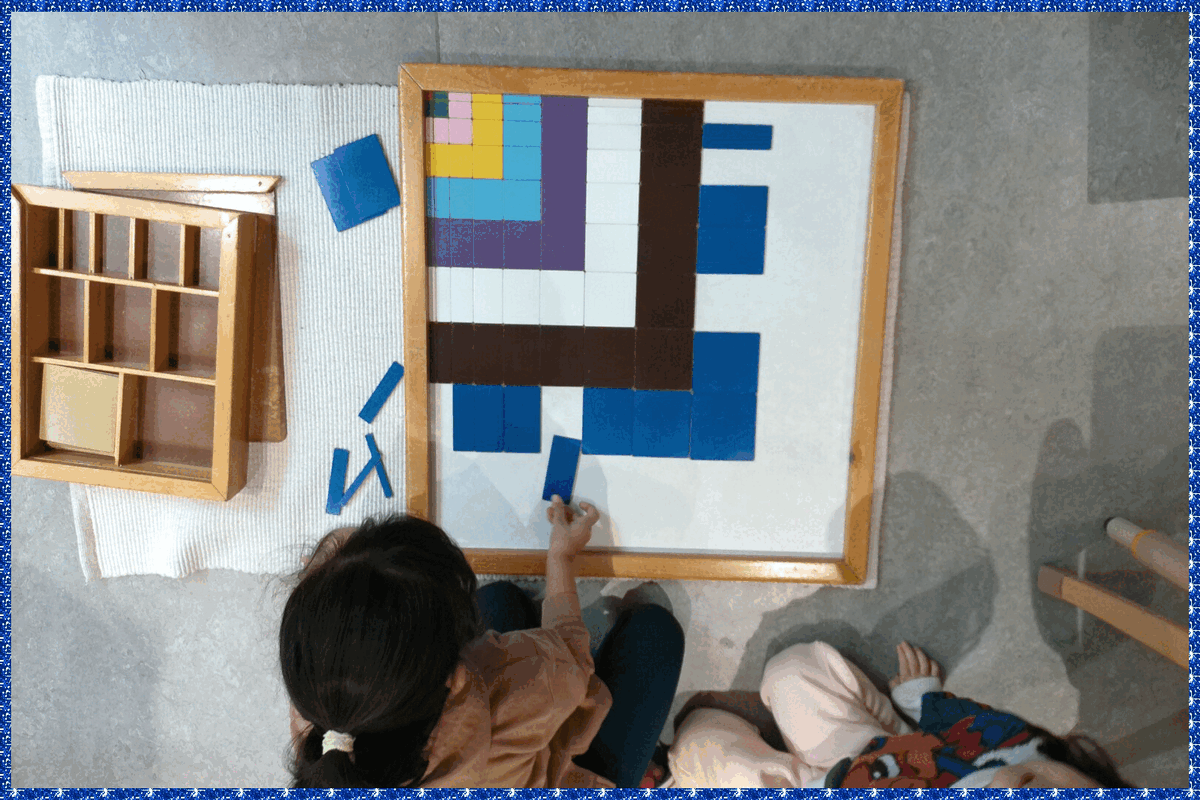
How It Works:
In this activity, children are invited to work with coloured tiles that represent square numbers. They will explore how different squares fit together to form larger squares, helping them visualize the concept of squared numbers and the mathematical connections between them.
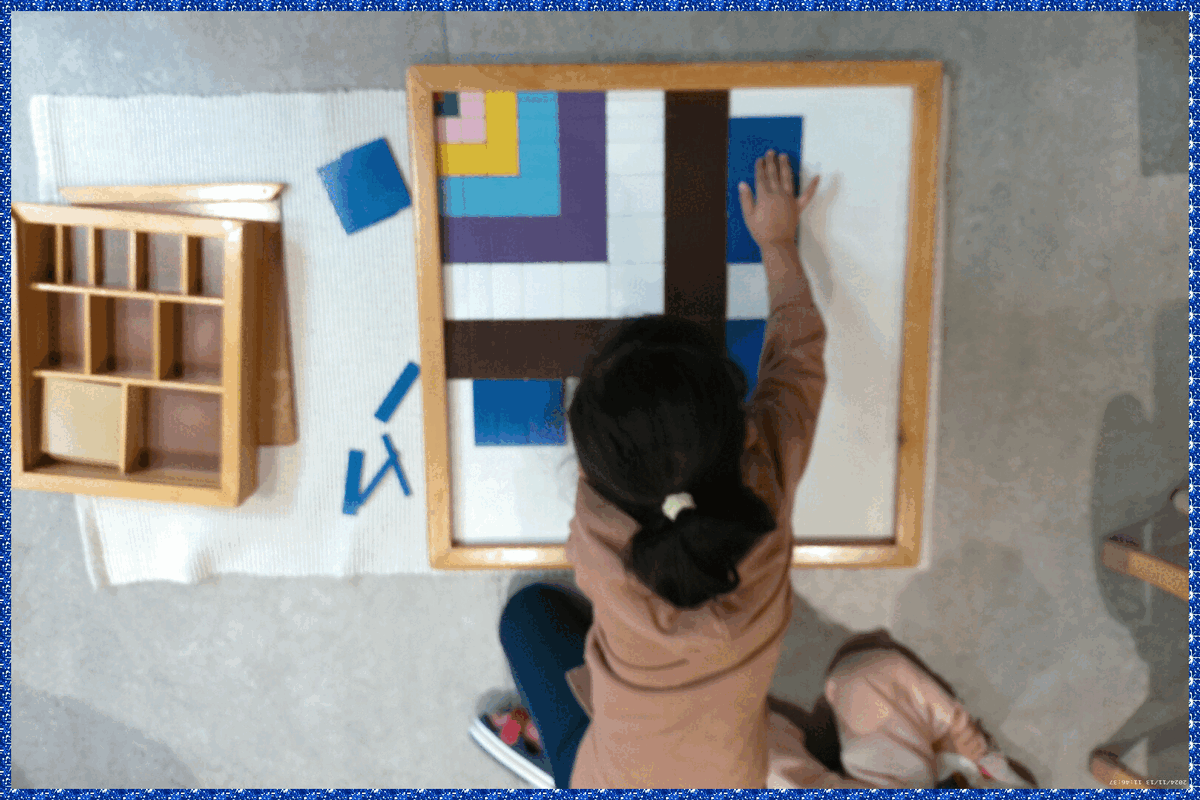
The process encourages:
- Critical Thinking: Children recognize the relationship between smaller and larger squares as they manipulate the tiles.
- Problem-Solving: Through trial and error, children discover how to arrange the tiles in ways that match or complete the square.
- Pattern Recognition: The Pythagoras Square helps children develop an understanding of number patterns, laying a foundation for future learning in algebra and geometry.
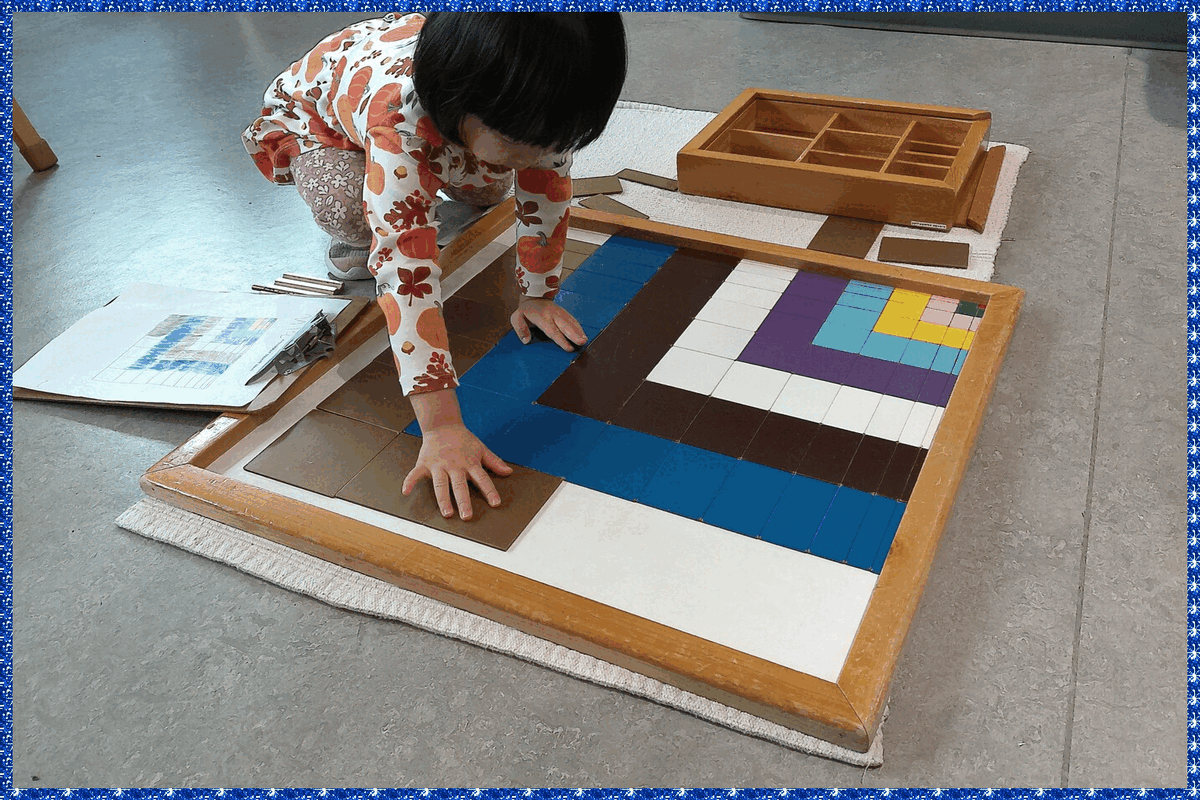
Benefits of the Pythagoras Square in the Casa Environment:
- Hands-on Learning: The tactile experience of moving tiles and creating shapes deepens the understanding of mathematical principles.
- Confidence in Math: By mastering the Pythagorean Theorem visually and kinesthetically, children gain a strong sense of mathematical competence and confidence.
- Developing Logical Thinking: The activity fosters logical reasoning and spatial awareness—skills that are essential for later math learning and problem-solving.
- Independence: Like all Montessori materials, the Pythagoras Square encourages self-directed learning, where children explore at their own pace, building both autonomy and a love for math.
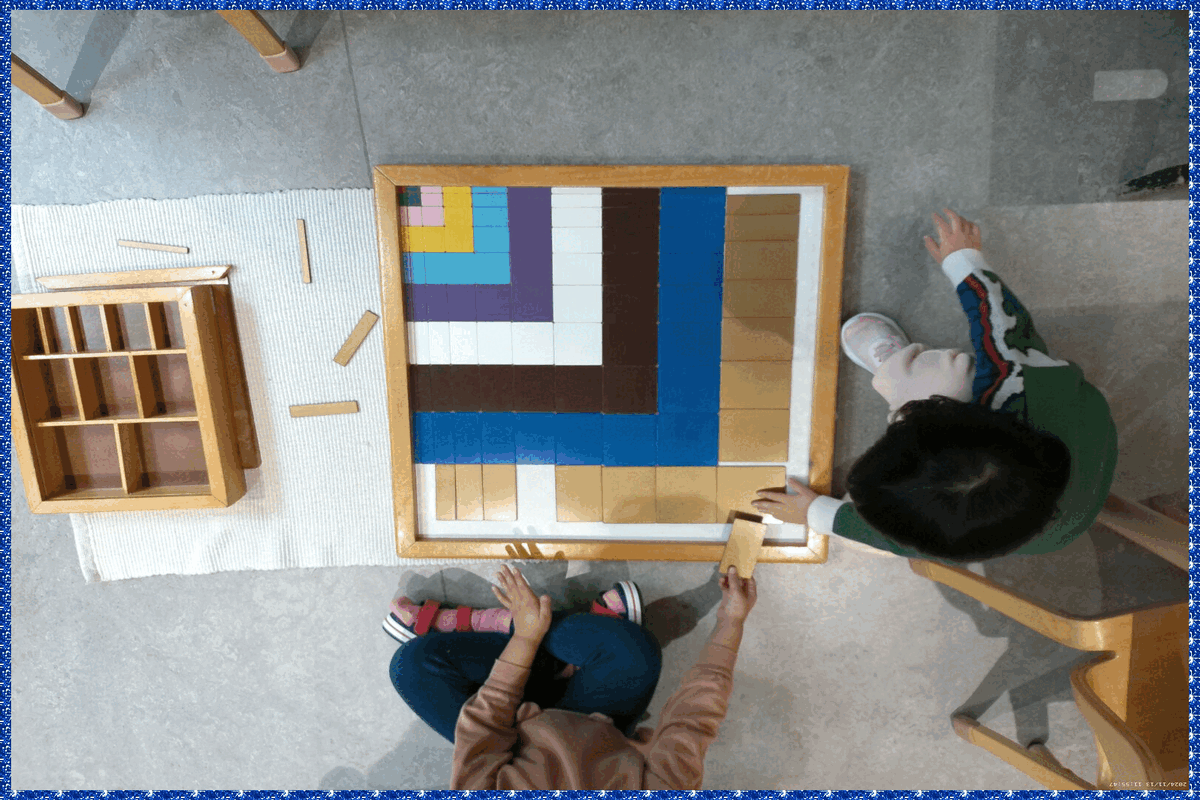
The Pythagoras Square Montessori Activity provides a bridge between abstract mathematical ideas and concrete learning experiences, creating an engaging, playful, and enriching environment for children to explore the beauty of mathematics. It’s an invaluable tool in the Casa classroom, sparking a lifelong interest in learning and understanding the world through numbers and shapes.
